A beginner's guide to RGB lighting your PC
It's not that hard to give your PC a little LED flair, but you'll need to pick the right components to coordinate a killer look.
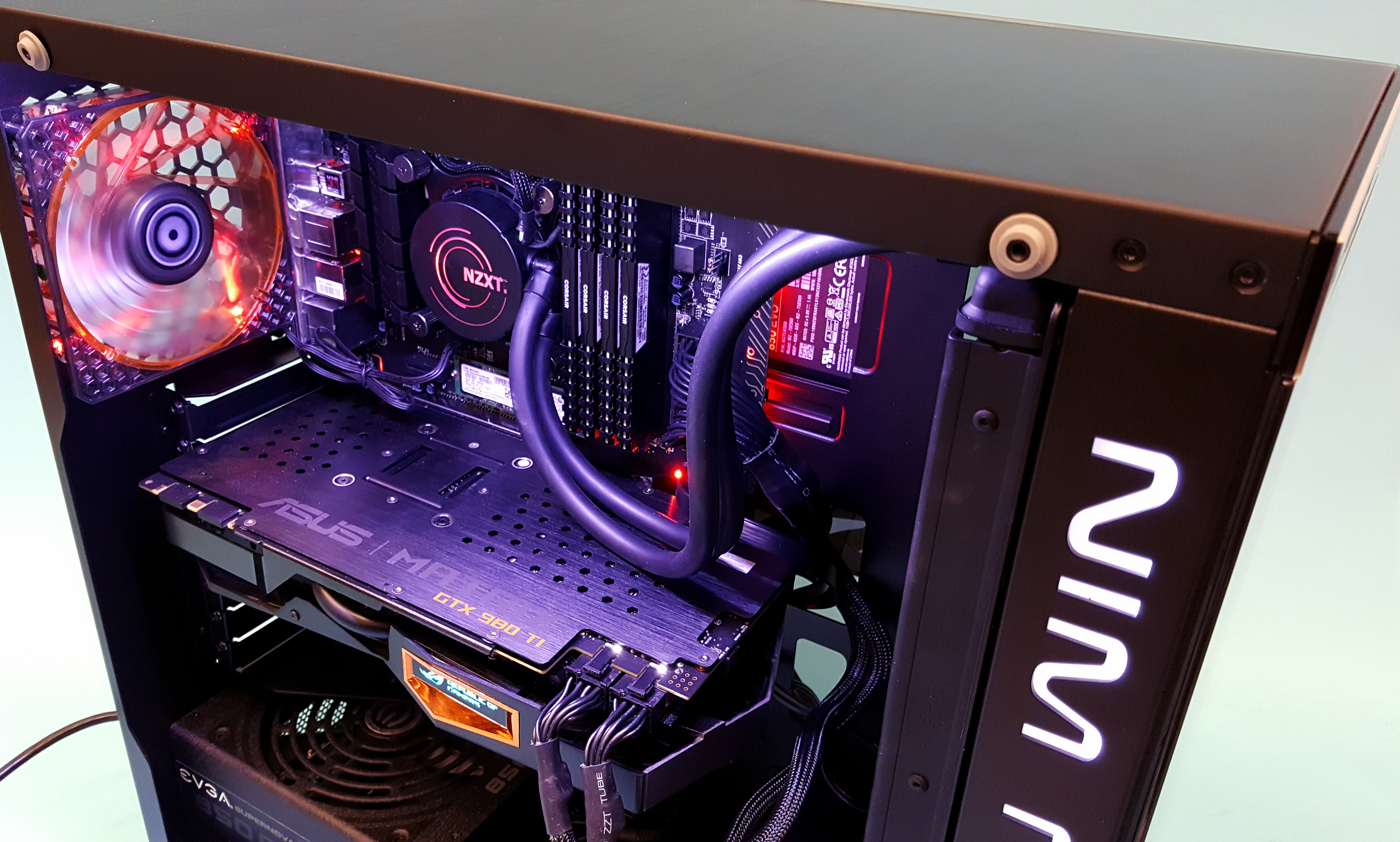
Updated 2/16/2017
Once you’ve put a little razzle-dazzle into your rig, it’s hard to go back. When we build PCs, we’re usually only thinking about one thing: gaming performance. Every so often we get fancy with watercooling or take pride in a compact build, but we don’t have the skills or ambitions of the incredible case modders who build amazing rigs for Computex every year. If you find those case mods as inspiring as we do, you might be wondering how to best start down the path of customizing your PC. RGB lighting is a great entry point, and theming your entire PC around a color scheme can be surprisingly fun.
RGB lighting your rig isn’t as simple as throwing a light strip into the case. Almost every component you choose for your PC has a part to play.
Case
For our example PC, we asked In-Win to send us the beautiful In-Win 805, which is a perfect candidate for RGB lighting thanks to its tempered glass. If you’re RGB lighting your PC, consideration #1 is having a great frame to show off that lighting. The 805’s glass is tinted enough to cut down on RGB glare and provide a smooth distribution of lighting around the interior of the case. It’s also very open and spacious, which is nice for custom builds (especially if you go down the route of a custom watercooling solution).
Here are the main considerations for picking a case to light up with LEDs:
- Case color: Theme your lights to match the exterior of the case. Black is easy to match with anything, while a red case like the NZXT Phantom 410 might look best with white lighting instead of more red. A white case interior will better reflect your RGB lighting, so consider that if you want brighter lighting.
- Side panel Window: A full glass panel like the In-Win 805’s is ideal. Glass requires more care than plastic, but makes for a classier final product. Make sure you like the shape of the window in the case you pick, and plan how you light the interior accordingly. A tinted glass or plastic panel will cut down on the glare from the lighting and provide a smoother, though darker, interior.
- PSU shroud: Smart lighting means hiding the components you don’t want people to see. Cases with a shroud for the power supply help keep cables and the boxy power supply out of sight.
- Cable management space: Like with the PSU shroud, having other places around the case to cram or tie off cables is a big benefit. Look for cases with space along the top rail where you can stash excess cable length, and you obviously want the bulk of your cables tied off completely out of sight around back.
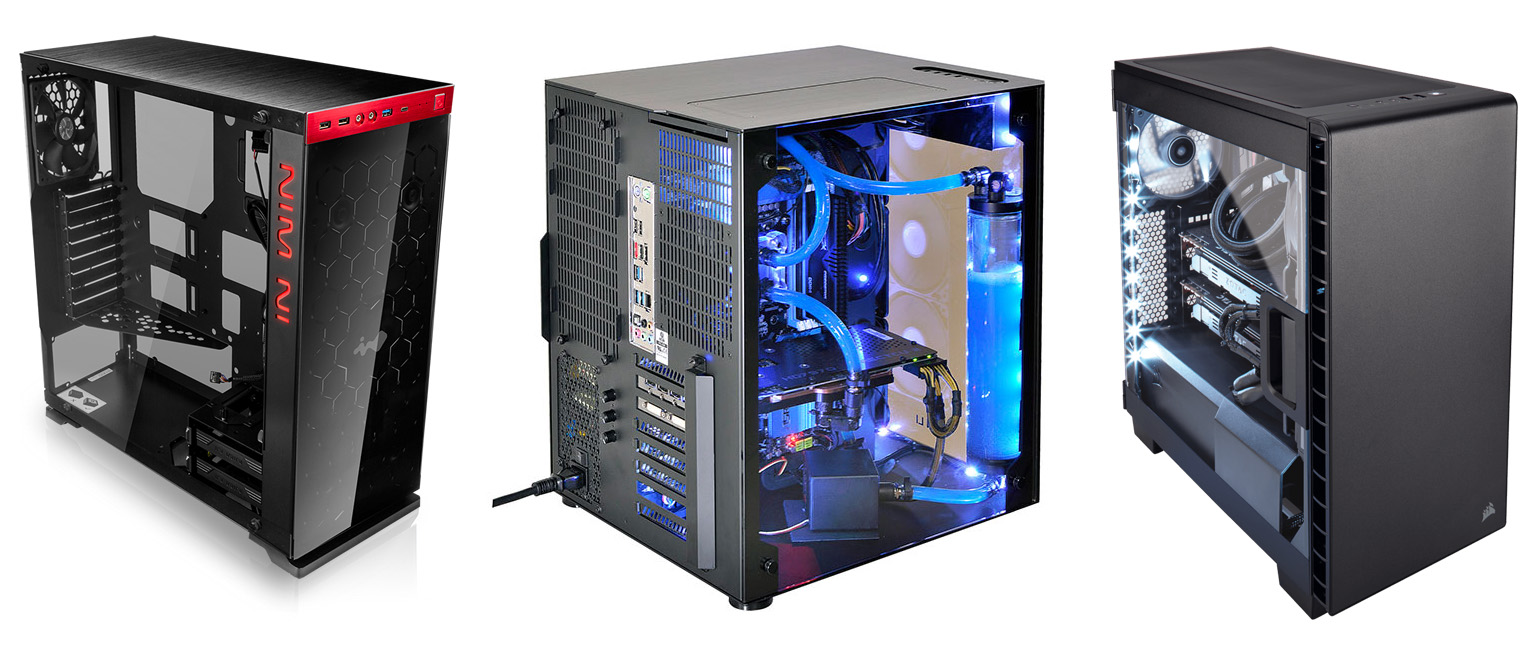
Here are some cases we really like for showing off an RGB-lit PC:
- In-Win 805 ($170 mid-tower ATX): One of our favorite tempered glass cases from In-Win, with enough space for an ATX build.
- In-Win 901 ($160, mini-ITX): A smaller (and much more affordable) version of In-Win’s gorgeous aluminum and glass full tower design.
- NZXT S340 Elite ($85, mid-tower ATX) - A new version of the S340 case with a tempered glass side panel. It has a nice splash of color with a red cable management bar inside. There's also a variant with a completely white interior, which is great for a bright RGB build.
- Lian Li PC-08 ($300 ATX, includes RGB LED lighting built-in): A unique cube design that looks absolutely gorgeous when RGB lit and watercooled.
- Phanteks Enthoo Evolv ($190 mid-tower ATX): This case comes with either tempered glass or plastic side panels.
- Corsair Crystal Series 570X RGB ($180, mid-tower ATX) - Corsair's new top-of-the-line tempered glass case with glass panels all around and RGB LED fans included. Your cable management game better be on point, but this can give you a stunning build.
- Corsair Carbide Clear 400C ($100, mid-tower ATX): A more budget friendly full window case with a nice door side panel and PSU shroud.
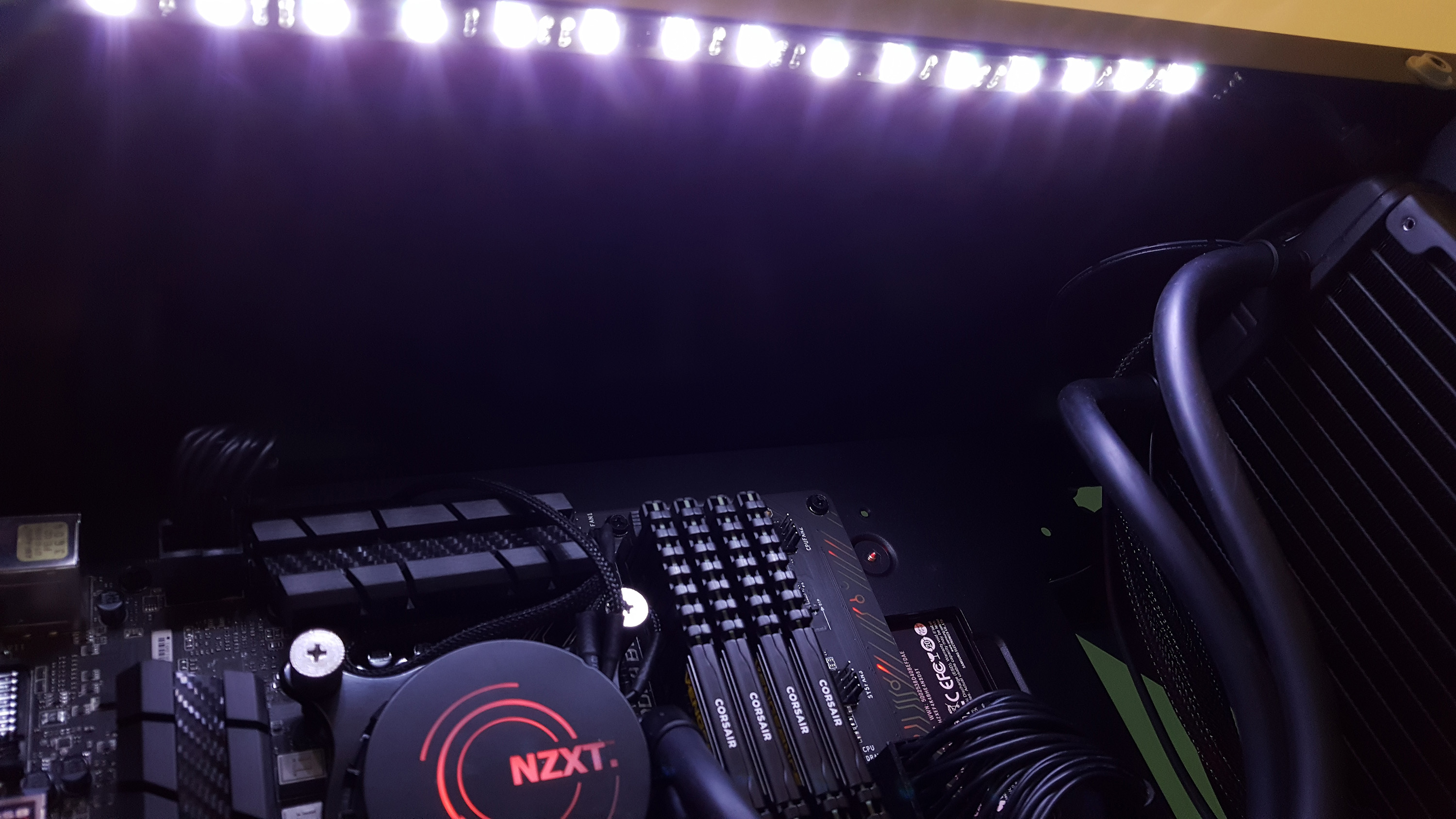
LED strips
While other components will all be helping accent your case, LED strips are going to be doing most of the hard work. You have a ton of options here. Do you want RGB strips that you can change with the press of a button on a remote? Do you run colored lighting or pure white for illumination? How do you attach them to your case?
The biggest gaming news, reviews and hardware deals
Keep up to date with the most important stories and the best deals, as picked by the PC Gamer team.
We kept it super simple with our example build and used a single white Alchemy LED strip from Bitfenix. Some double-sided tape keeps it attached to the top of the case, where it’s out of sight, but illuminates the entire interior. We could’ve put another strip at the bottom of the window for more lighting, or along either side, but one gave us a nice, soft glow.
We have a guide to the best RGB LED lighting kits that gets into the right options for different kinds of builds. The most basic option, similar to our example above, is the DeepCool RGB 350, which comes with a pair of 12-inch RGB strips and a remote for controlling them for less than $20. The strips have magnets for easy mounting.
The go-to for smart RGB LED lighting is NZXT's Hue+ lighting kit, which comes with a control box you mount inside your PC and four RGB strips to go along with it. Extension kits can add more to the mix, and you can do a ton of customization with this kit. You can create extensive custom lighting effects, and since the RGBs are individually addressable, that gives you the option to have rainbow effects and other fanciness. If you don't mind the higher price, this will give you tons of control over how you light your case—or your entire desk, if you want to.
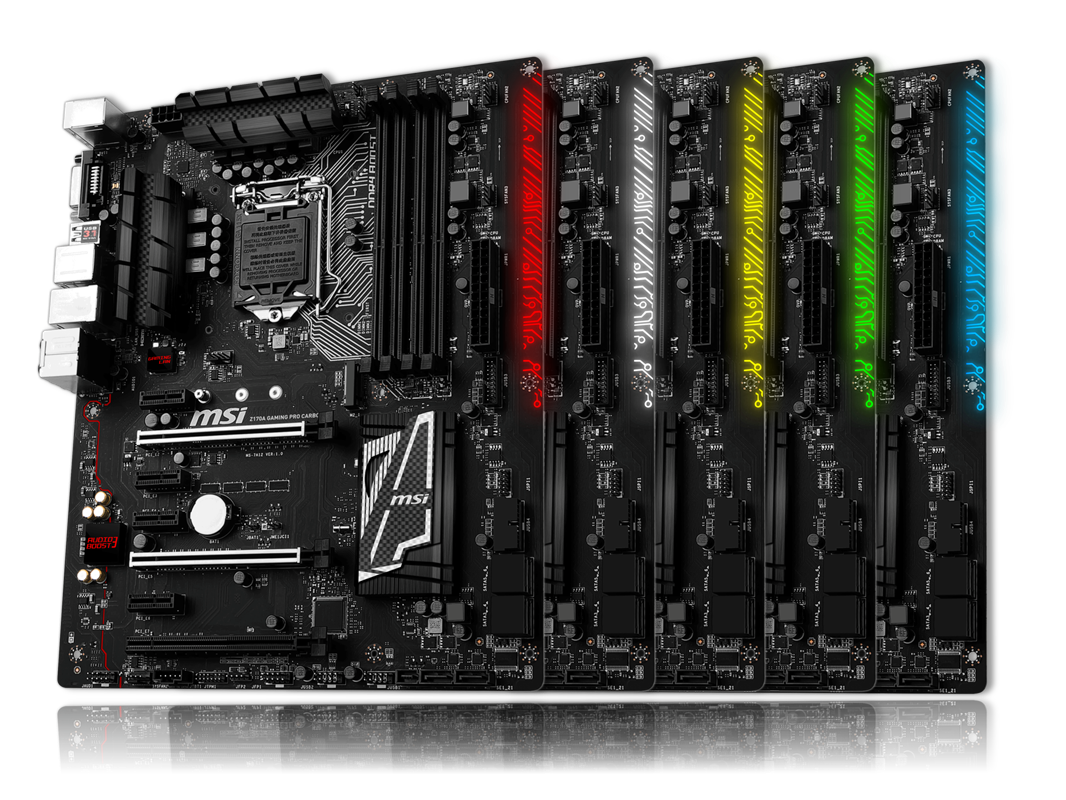
Motherboard
In the recent trend to make sure absolutely every PC component is outfitted with RGB LEDs, the major motherboard vendors have kitted out their boards with lighting. We built our example PC with the MSI Z170 Gaming Pro Carbon, which has a fairly subtle LED line tracing around the board and an RGB zone along its right edge. The color is configurable with MSI’s software. It’s a minor lighting element compared to an LED strip, but it does help to illuminate the small details of the motherboard surface. And motherboards are cool!
MSI, Asus, and Gigabyte have all embraced the LED lighting craze, so your options here are good. If you’re building an expensive X99 system, you can even get a motherboard with an LED power header for plugging those RGB LED strips directly into the motherboard. That’s a great way to unify everything around a single color scheme.
The newest round of Z270 motherboards for Intel's Kaby Lake CPUs are embracing the motherboard lighting trend, and recently motherboard makers have been changing their design language and color schemes a bit to freshen things up. It's a great time to pick up a new board that fits the look you want. Black is still the standard, but you now can choose colors like silver (or titanium, as they call it).
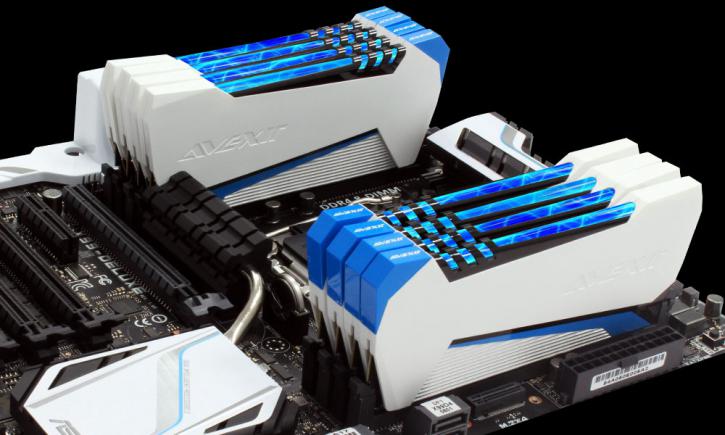
RAM
The RAM in our example build is some perfectly adequate Corsair DDR4. It’s a nice black that mostly disappears into the build. But you can add some RGB flash to your RAM, too. Avexir and Geil are two of the go-to brands for RGB-lit memory sticks. As with the case, remember that color coordination is important. Pick a color scheme and RAM that fits it.
The flashiest of the bunch are Avexir’s Raiden sticks, which have a flickering fluorescent-esque tube mounted on top. The more subdued Core sticks are lower profile and offer a nice, subtle glow.
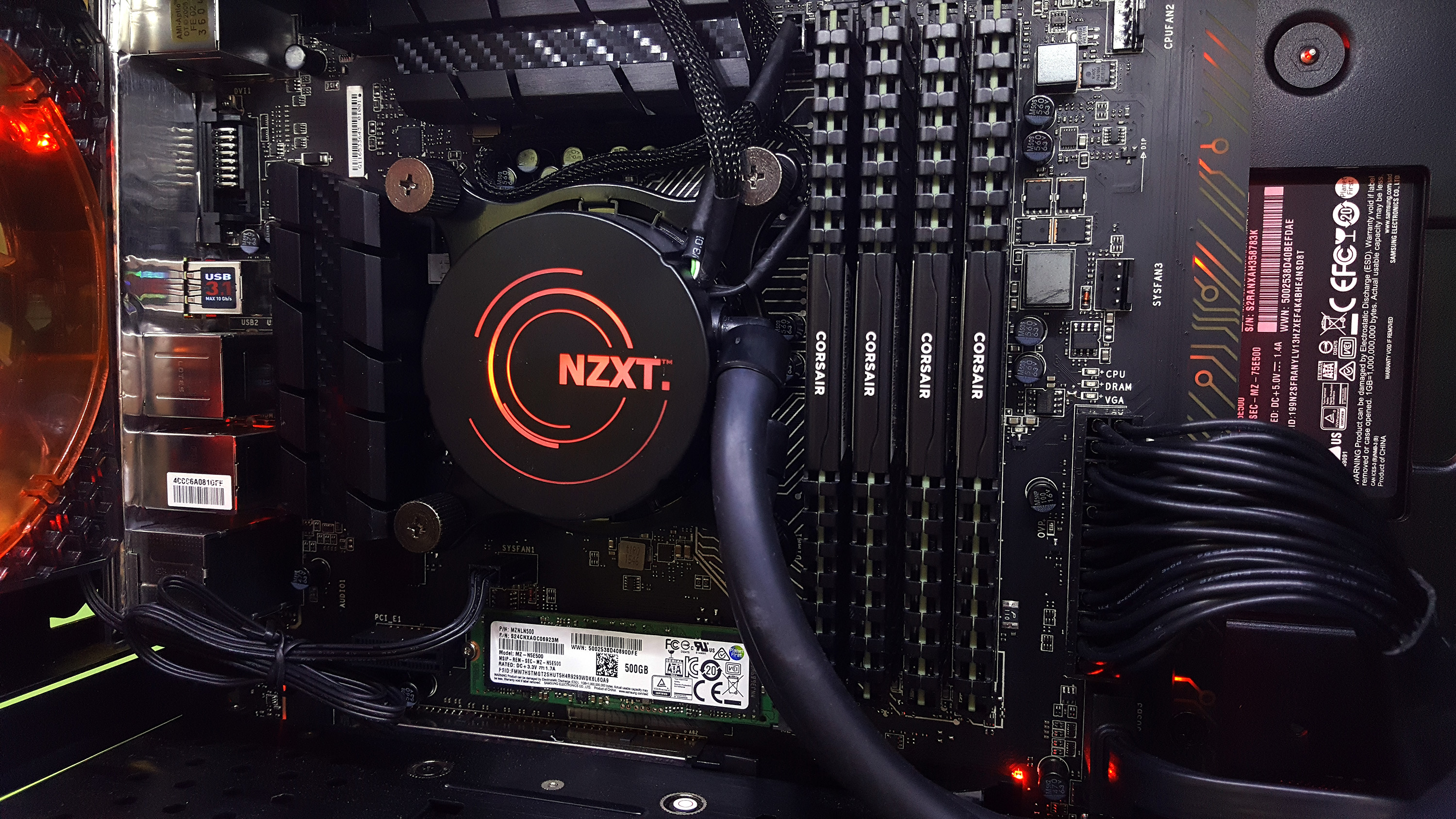
CPU coolers and fans
Yep, your cooler can join in the RGB party, too. For our build we used an NZXT Kraken cooler, which has an RGB LED built into its pump. The color of the LED was easily configurable with NZXT’s CAM software in Windows. Corsair’s line of liquid coolers mostly have RGB LEDs, too. Unless you go for a more specialized cooling setup, those are both great options, though we prefer the design of the Kraken.
Plenty of other cooler companies make coolers outfitted with LEDs (Cooler Master, for example) but with single-color LEDs. Remember if you buy one of those, you’ll need to plan your color scheme around it.
Prefer air cooling? There are RGB air coolers, too. We recently tried out Phononic’s Hex 2.0 cooler, which has a side-mounted RGB logo controllable via software. Most other CPU air coolers we’ve seen don’t have lighting built-in, or are paired with a single-color LED fan, like this one from Deepcool.
LED fans are a cheap addition that can add a lot more light to your case, and they come in plenty of colors. We threw a simple red LED fan into our case, but you can also buy RGB LED models if you want to be able to customize. That’s much more expensive than single color LEDs, though. Our advice is to figure out the color scheme of your case first, then sort on Newegg by that color. Want a svelte purple and white setup? Grab some purple fans!
Now if you want to get real fancy, pair some of NZXT's Aer RGB fans with its Hue+ lighting kit. That will let you control and sync the lighting colors across your system.
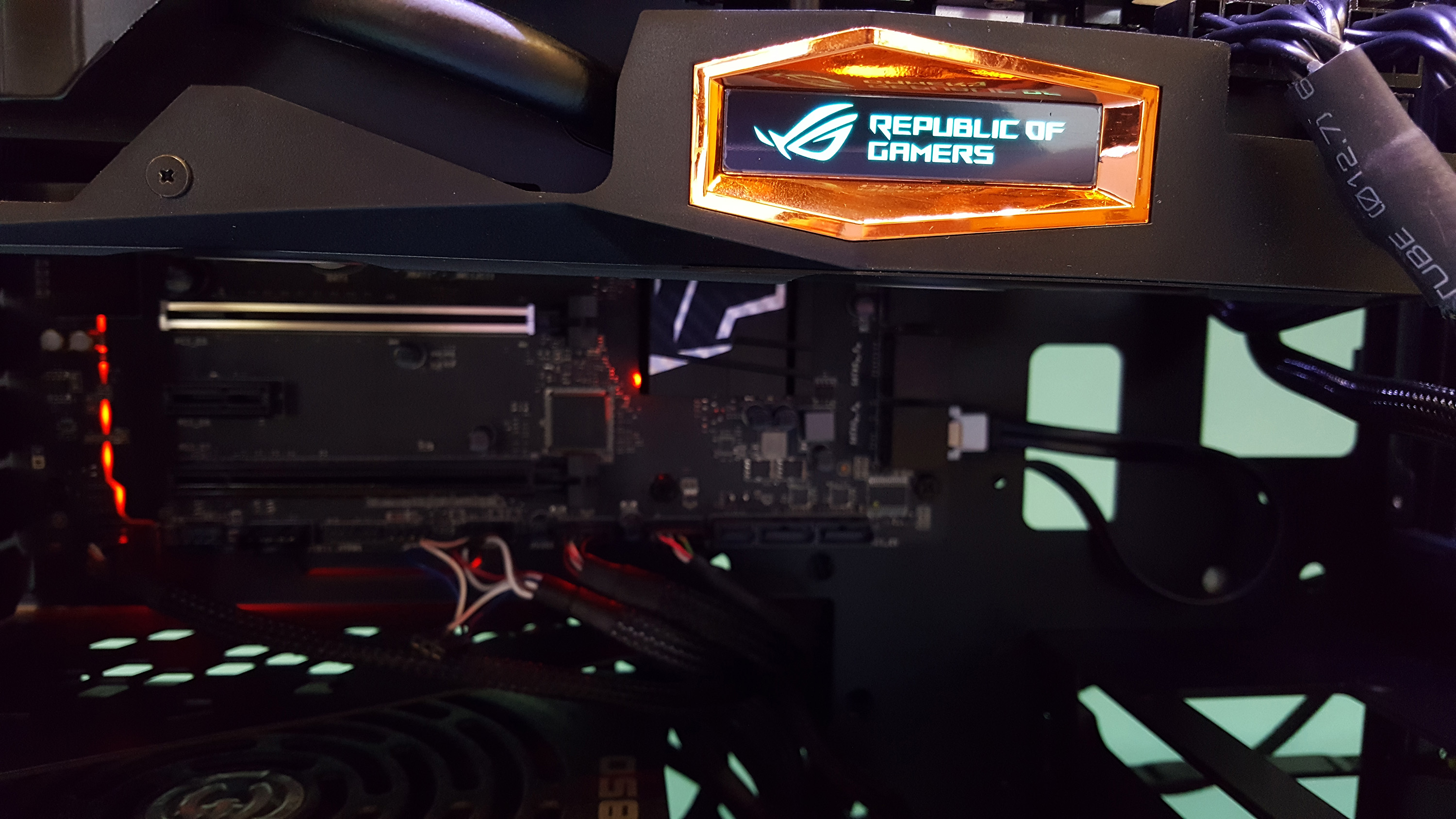
Graphics card
If you don’t plan carefully, a graphics card can be an obstacle to overcome. Nvidia’s reference card designs, for example, have lime green LEDs that do not pair well with a blue or red color scheme. Keep in mind the color of the LED on the GPU you own or plan to buy, and make sure your color scheme will work in harmony with it.
In the latest generation of graphics cards, with Nvidia’s GTX 1070 and 1080, several GPU models come outfitted with RGB LEDs. EVGA’s FTW 1070 and MSI’s Gaming X card are two examples. Those have LEDs you can control through software.
Keep in mind other GPUs outfitted with LED logos won’t necessarily give you that sort of control. The Asus Matrix 980 Ti in our example rig is a hell of a graphics card, but its LED display changes colors based on the GPU load, cycling through blue, yellow, green and red. No color scheme you concoct for your PC will pair well with all of those colors, so it’s the kind of minor imperfection you’ll have to live with or plan around.

Wrapping up
If you’re diving into RGB lighting for the first time, look online for inspiration. See what colors work well together. Aim for something simple to start—pair a red or blue with white and you really can’t go wrong.
Later on you can get into the complicated stuff. Play around with case modding with custom painting. You can paint LEDs with glass paint to adjust their color. Outfit a shielded motherboard with custom LEDs. Match the colors of a closed loop watercooling setup with your LEDs. Just have fun—even if your PC mostly sits under your desk and runs games, you can still take pride in its appearance.

Wes has been covering games and hardware for more than 10 years, first at tech sites like The Wirecutter and Tested before joining the PC Gamer team in 2014. Wes plays a little bit of everything, but he'll always jump at the chance to cover emulation and Japanese games.
When he's not obsessively optimizing and re-optimizing a tangle of conveyor belts in Satisfactory (it's really becoming a problem), he's probably playing a 20-year-old Final Fantasy or some opaque ASCII roguelike. With a focus on writing and editing features, he seeks out personal stories and in-depth histories from the corners of PC gaming and its niche communities. 50% pizza by volume (deep dish, to be specific).

